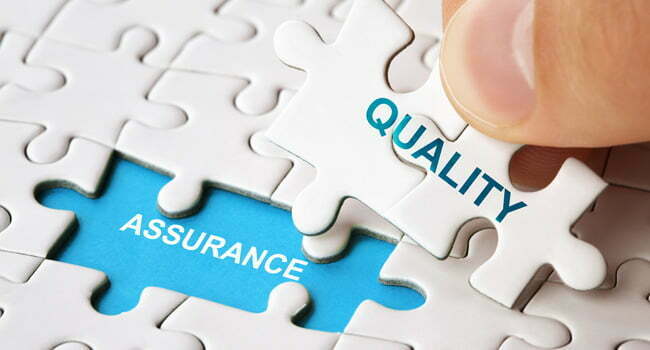Why Is Quality Assurance (QA) Necessary For All Translation Projects
Some people think small translation projects do not need to have any formal quality assurance steps performed on them before delivering the project. These people think one translator, reviewing his or her own work, is sufficient to ensure 100% quality on a translation.
Well, I am sorry to tell all you QA minimalists out there, but from my 18 years in the translation business and starting out as a Hebrew-Arabic translator and interpreter, with some degrees in Translation and Interpretation, QA is to be embraced, not skipped, no matter if you are translating a business card or book series.
A Formal Translation Quality Assurance Process (QA)
Even small translation requests should be managed the same way as the large ones. Steps in the QA process should always include:
- Understanding your target audience.
- Understanding your client’s preferences to style and terminology.
- Reviewing the source document for any questions or issues.
- Having a minimum of two sets of qualified eyes reviewing the translation.
- Seeking and securing a client’s review & approval.
Each step in the process ensures a better, more accurate and fluid final product. This process is aided by the use of checklists whether homegrown within a translators reference library or translation agency’s QA department, or integrated into a translation project management and/or editing tool.
Translation quality is really only guaranteed by adhering to a process and using a team approach, EVERY TIME you complete a translation.
Sure, there are those translator creative and writing geniuses’ out there that spit out perfect translations every time on shorter projects, but those professionals are rare. And even they welcome and recognize that a translation quality assurance (QA) process and the team ensure they do their best work always.

Human Translation and Translation Technology to the Rescue
We all know that today we have two main tools in providing translation services. The human tools and technology tools.
Human Translation Tools
By leveraging the human tools or more accurately teams, translation quality assurance is guaranteed by using qualified translators, qualified editors and qualified project managers collaborating together to produce final polished translations.
This team approach will guarantee the final translated text will transfer the exact message in the source content and even go beyond mere translation so the reader feels the translated text was originally written in the target language.
Translation Quality Assurance Technology Tools
No denying here, translators love their tools! And they should. In the last 10 years alone, writing, editing and translation tools have improved greatly. CAT tools like (Across-Déjà vu-MemoQ- Multicorpora- SDL Trados Studio- Transit- Wordfast) Editing Tools like (ErrorSpy, QADistiller, Xbench and Verifika) all have great features to enhance the sharpness and consistent application of QA with a translation. Even the creation of customized QA reports above standard spell checkers and terminology managers helps with the quality of output with translations.
And for sure these types of tools and their reports can upgrade your translated text from good to really good in the eyes of your clients, especially when working on large volume projects where you have different translators working on many different files under the same project.
However, these tools will have their limitation and they cannot guarantee a client receives a desired style or tone necessarily. That goes back to why human tools are still the most important part of the quality assurance process. The humans will ask the right questions up front, along the way and take the final read of a translated text before delivery.
The Bottom Line with Translation Quality Assurance (QA)
Translation QA is always going to be a hot topic and rightfully at the center of any translation services discussion. While standards and tools will keep evolving, there are two facts that will remain unchanged.
- No matter how big or small the project is, your translation provider should apply a solid Translation Quality Assurance process to ensure the desired quality outcome.
- No QA tool can replace the professional human reviewers, translation QA tools may help translators work more expediently and accurately, but it’s a must to apply the human touch to reach perfection.

